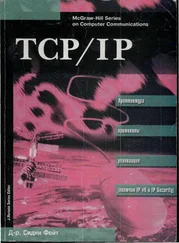The leaks do show diligent collection of the protocol messages used to set up VPN encryption, so some cryptographers suggested in 2015 that some variant of the “Logjam attack” is feasible for a nation-state attacker against the 1024-bit prime used by most VPNs and many TLS connections with Diffie-Hellman key exchange [26]. Others pointed to the involvement of NSA cryptographers in the relevant standard, and a protocol flaw discovered later; yet others pointed out that even with advances in number theory or protocol exploits, the NSA has enough money to simply break 1024-bit Diffie-Hellman by brute force, and this would be easily justified if many people used the same small number of prime moduli – which they do [854]. I'll discuss cryptanalysis in more detail in Chapter 5.
There is a long history of attacks on protocols, which can be spoofed, replayed and manipulated in various ways. (We'll discuss this topic in detail in Chapter 4.) The best-documented NSA attack on Internet traffic goes under the codename of Quantum and involves the dynamic exploitation of one of the communication end-points. Thus, to tap an encrypted SSL/TLS session to a webmail provider, the Quantum system fires a ‘shot’ that exploits the browser. There are various flavours; in ‘Quantuminsert’, an injected packet redirects the browser to a ‘Foxacid’ attack server. Other variants attack software updates and the advertising networks whose code runs in mobile phone apps [1999].
Computer and Network Exploitation (CNE) is the generic NSA term for hacking, and it can be used for more than just key theft or TLS session hijacking; it can be used to acquire access to traffic too. Operation Socialist was the GCHQ codename for a hack of Belgium's main telco Belgacom 5in 2010–11. GCHQ attackers used Xkeyscore to identify three key Belgacom technical staff, then used Quantuminsert to take over their PCs when they visited sites like LinkedIn. The attackers then used their sysadmin privileges to install malware on dozens of servers, including authentication servers to leverage further access, billing servers so they could cover their tracks, and the company's core Cisco routers [734]. This gave them access to large quantities of mobile roaming traffic, as Belgacom provides service to many foreign providers when their subscribers roam in Europe. The idea that one NATO and EU member state would conduct a cyber-attack on the critical infrastructure of another took many by surprise. The attack also gave GCHQ access to the phone system in the European Commission and other European institutions. Given that these institutions make many of the laws for the UK and other member states, this was almost as if a US state governor had got his state troopers to hack AT&T so he could wiretap Congress and the White House.
Belgacom engineers started to suspect something was wrong in 2012, and realised they'd been hacked in the spring of 2013; an anti-virus company found sophisticated malware masquerading as Windows files. The story went public in September 2013, and the German news magazine Der Spiegel published Snowden documents showing that GCHQ was responsible. After the Belgian prosecutor reported in February 2018, we learned that the attack must have been authorised by then UK Foreign Secretary William Hague, but there was not enough evidence to prosecute anyone; the investigation had been hampered in all sorts of ways both technical and political; the software started deleting itself within minutes of discovery, and institutions such as Europol (whose head was British) refused to help. The Belgian minister responsible for telecomms, Alexander de Croo, even suggested that Belgium's own intelligence service might have informally given the operation a green light [735]. Europol later adopted a policy that it will help investigate hacks of ‘suspected criminal origin’; it has nothing to say about hacks by governments.
A GCHQ slide deck on CNE explains that it's used to support conventional Sigint both by redirecting traffic and by “enabling” (breaking) cryptography; that it must always be “UK deniable”; and that it can also be used for “effects”, such as degrading communications or “changing users' passwords on extremist website” [735]. Other papers show that the agencies frequently target admins of phone companies and ISPs in the Middle East, Africa and indeed worldwide – compromising a key technician is “generally the entry ticket to the network” [1141]. As one phone company executive explained, “The MNOs were clueless at the time about network security. Most networks were open to their suppliers for remote maintenance with an ID and password and the techie in China or India had no clue that their PC had been hacked”.
The hacking tools and methods used by the NSA and its allies are now fairly well understood; some are shared with law enforcement. The Snowden papers reveal an internal store where analysts can get a variety of tools; a series of leaks in 2016–7 by the Shadow Brokers (thought to be Russian military intelligence, the GRU) disclosed a number of actual NSA malware samples, used by hackers at the NSA's Tailored Access Operations team to launch attacks [239]. (Some of these tools were repurposed by the Russians to launch the NotPetya worm and by the North Koreans in Wannacry, as I'll discuss later.) The best documentation of all is probably about a separate store of goodies used by the CIA, disclosed in some detail to Wikileaks in the ‘Vault 7’ leaks in 2017. These include manuals for tools that can be used to install a remote access Trojan on your machine, with components to geolocate it and to exfiltrate files (including SSH credentials), audio and video; a tool to jump air gaps by infecting thumb drives; a tool for infecting wifi routers so they'll do man-in-the-middle attacks; and even a tool for watermarking documents so a whistleblower who leaks them could be tracked. Many of the tools are available not just for Windows but also for macOS and Android; some infect firmware, making them hard to remove. There are tools for hacking TVs and IoT devices too, and tools to hamper forensic investigations. The Vault 7 documents are useful reading if you're curious about the specifications and manuals for modern government malware [2023]. As an example of the law-enforcement use of such tools, in June 2020 it emerged that the French police in Lille had since 2018 installed malware on thousands of Android phones running EncroChat, an encrypted messaging system favoured by criminals, leading to the arrest of 800 criminal suspects in France, the Netherlands, the UK and elsewhere, as well as the arrest of several police officers for corruption and the seizure of several tons of drugs [1334].
2.2.1.10 The analyst's viewpoint
The intelligence analyst thus has a big bag of tools. If they're trying to find the key people in an organisation – whether the policymakers advising on a critical decision, or the lawyers involved in laundering an oligarch's profits – they can use the traffic data in Xkeyscore to map contact networks. There are various neat tools to help, such as ‘Cotraveler’ which flags up mobile phones that have traveled together. We have some insight into this process from our own research into cybercrime, where we scrape tens of millions of messages from underground forums and analyse them to understand crime types new and old. One might describe the process as ‘adaptive message mining’. Just as you use adaptive text mining when you do a web search, and constantly refine your search terms based on samples of what you find, with message mining you also have metadata – so you can follow threads, trace actors across forums, do clustering analysis and use various other tricks to ‘find more messages like this one’. The ability to switch back and forth between the detailed view you get from reading individual messages, and the statistical view you get from analysing bulk collections, is extremely powerful.
Читать дальше











